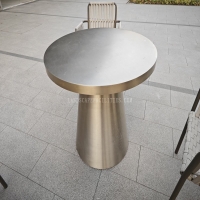Welcome to the website for landscape facilities products and knowledge.
How do landscape sofas with quick-drying foam cushions compare to traditional foam in terms of comfort and durability?
When choosing a landscape sofa, the type of foam used in the cushions plays a crucial role in both comfort and durability. Quick-drying foam, a modern innovation, offers distinct advantages over traditional foam, particularly for outdoor or high-moisture environments.
Comfort Comparison:
Quick-drying foam is engineered to provide firm yet responsive support, adapting to body contours while maintaining shape over time. Unlike traditional foam, which may soften excessively with prolonged use, quick-drying foam retains its resilience, ensuring consistent comfort. Its open-cell structure enhances breathability, reducing heat retention—a common issue with dense traditional foam.
Durability Differences:
Traditional foam is prone to moisture absorption, leading to mold, mildew, and eventual breakdown. Quick-drying foam, however, resists moisture and dries rapidly, making it ideal for humid climates or poolside settings. Its UV-resistant properties further extend lifespan compared to traditional options that may crack or degrade under sun exposure.
Maintenance & Longevity:
Quick-drying foam requires minimal upkeep, as its moisture-wicking properties prevent odor buildup. Traditional foam cushions often need frequent flipping or replacement due to sagging. While initial costs may be higher for quick-drying foam, its extended durability offsets long-term expenses.
For those prioritizing comfort and longevity in outdoor or high-traffic spaces, landscape sofas with quick-drying foam cushions outperform traditional foam in both support and resilience. The choice ultimately depends on usage context, but modern quick-dry technology offers a clear edge for durability and all-weather performance.
Related search:

Recommendation
Outdoor Metal Table - Classic Outdoor Furniture, Stainless Steel Table, Durable and Reliable